Jamanticus
Well-Known Member
Hi again, RPF.
This is my thread of bringing the look of my United Cutlery/ cheap knockoff Lord of the Rings swords from rather dull and 'meh' to ancient and beautiful.
*Anduril pics on post 19*
*Ranger sword pics on post 26*
*Legolas knife comparison on post 32*
As LotR fans know, Glamdring is one of the oldest swords in the entire series, many thousands of years old, made by the Elves.
Well, out of the box, my replica looked like it had just been made around a week ago and someone spray painted some flat clear coat on it :angry.

I vowed then and there that I would distress it, weather it, antique it, whatever it took to make the sword look the way it was supposed to (in my mind, a super-amazing sword that would only have a slight buildup of dirt and a few dings and scratches, despite millennia of hacking things apart).
I started out with the dings- used a nice old horseshoe and lightly tapped the sword's hilt a few times in random places. I say lightly because the handle of the sword is made out of pretty darn soft metal, and I didn't want really deep dents in it.
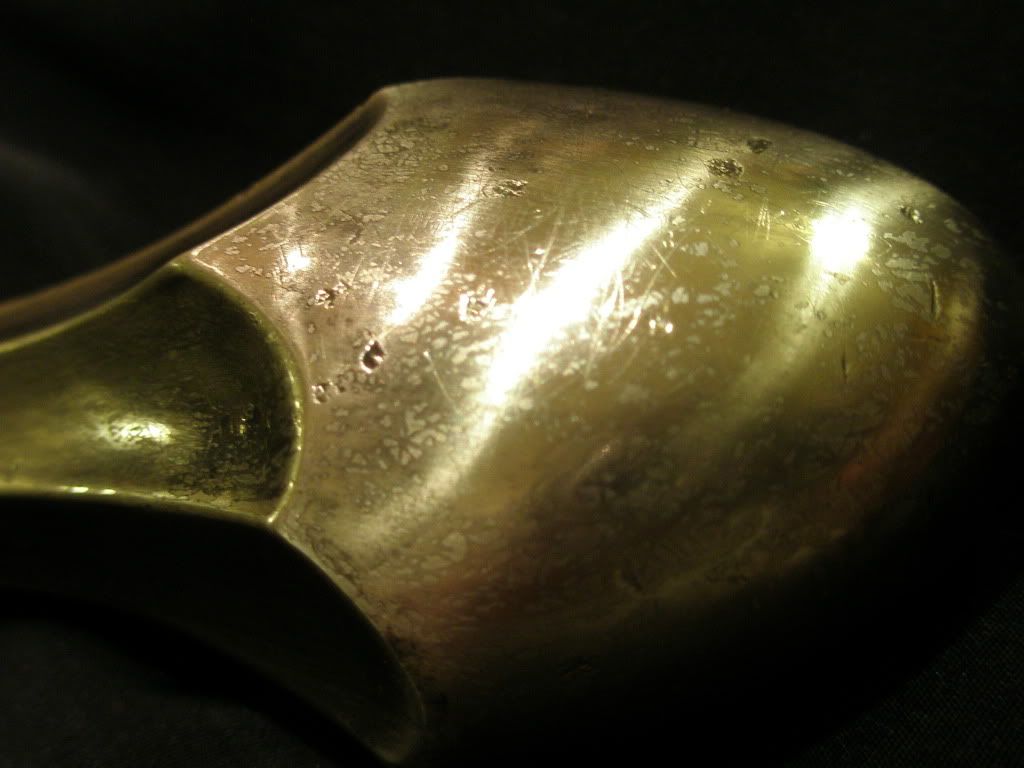
The scratches were the most time-consuming. I actually took an old calligraphy nib that didn't work anymore and started manually scratching every part of the hilt I wanted to be scratched. This gave me a lot more control over the look of the hilt than the much quicker way of using coarse sandpaper. Drove me a bit crazy at times, but it achieved a nice effect. It was also really handy for removing bits of the dull clear coat in the areas I wanted shinier.
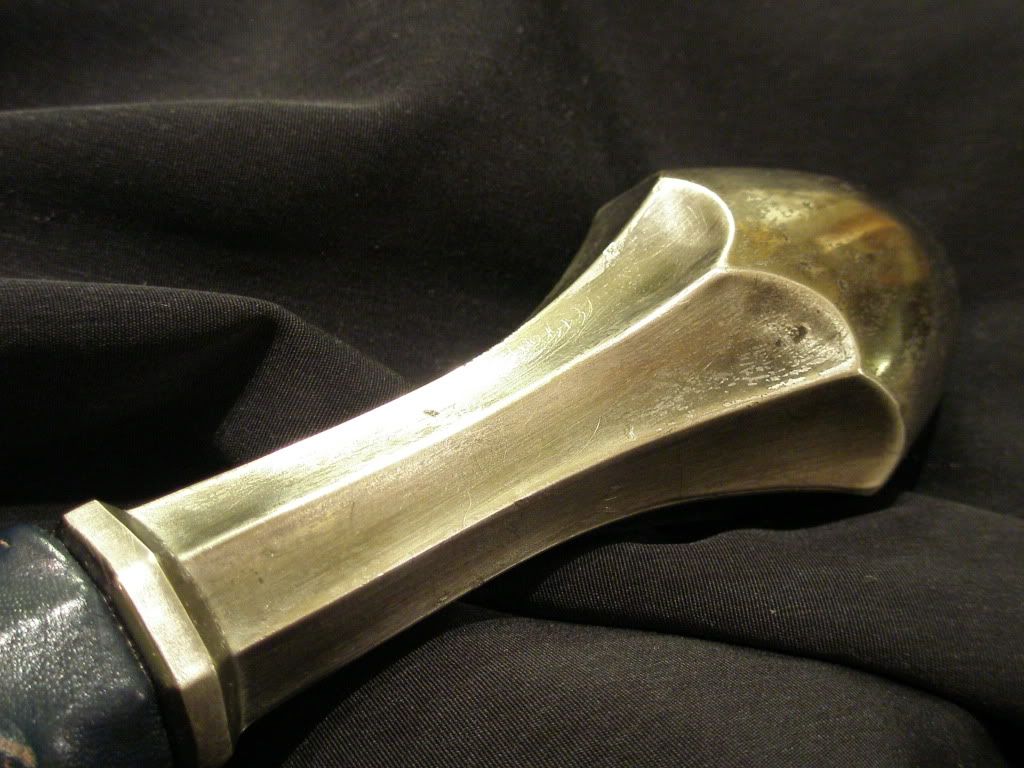
After all this (probably around 20 hours of weathering- remember, I did this over many years :lol), the sword looked quite nice, but it was still missing something: dirt in all the grooves and in the engraved Cirth lettering to make it really look old. This was the biggest deal in my mind, especially since the recently (then) released Museum Collection edition did such a good job with the dirt bit.
I decided soot would be a nice source of dirtiness for the sword's hilt, so I went ahead a held the dings and lettering over a candle and blackened them all up. Then, took a moist paper towel and wiped off the excess soot so the only remaining dirtiness was in the fine grooves and unreachable places in the hilt.
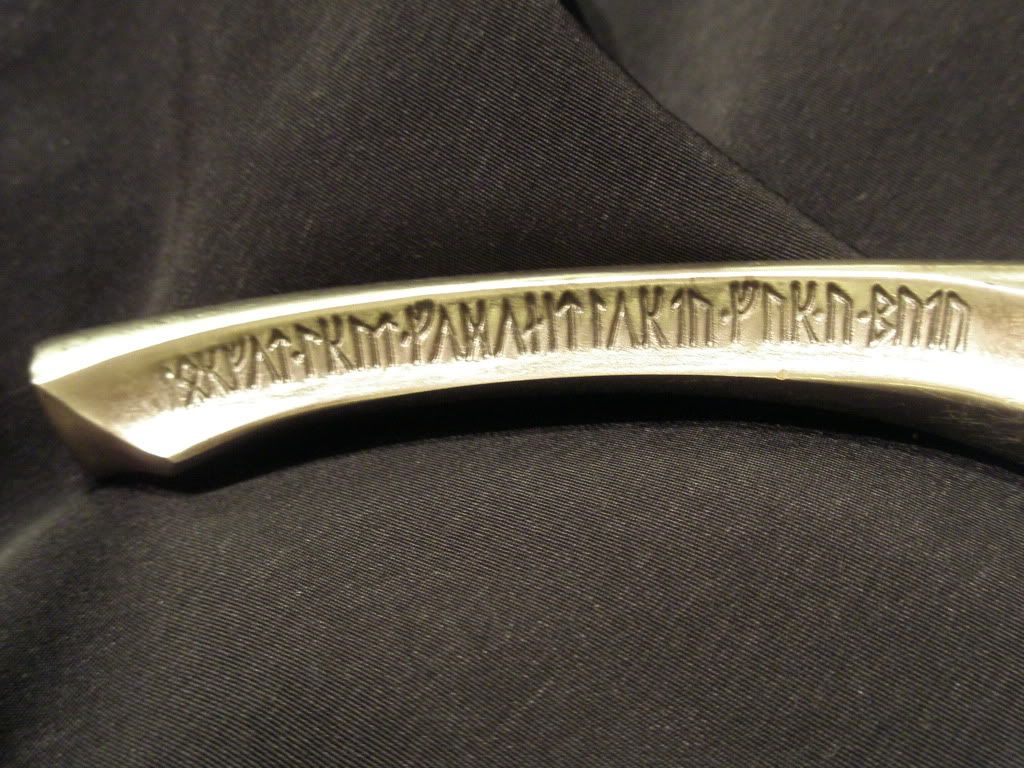
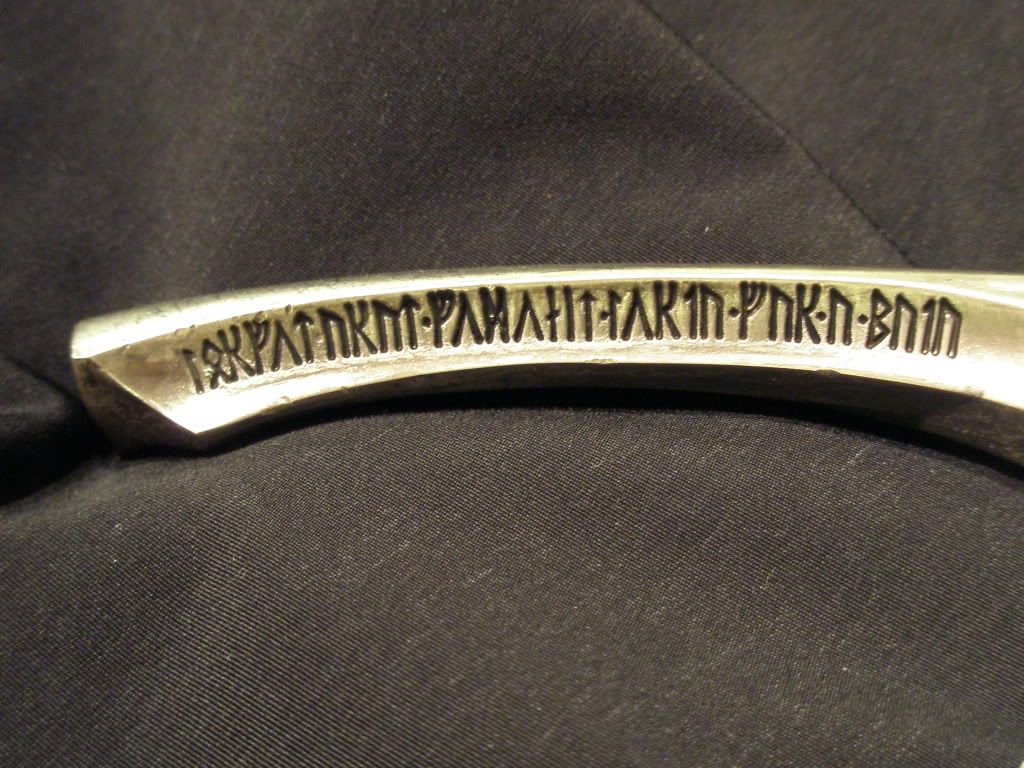

As you can see, this really enhanced the look of the sword, especially with the darker lettering. At this point, I was finally satisfied- sure, the blade would never be as accurate as the film prop, sure the pommel would always be a little bit wider than the film prop, but at least this sword finally had the one thing it lacked when it was new: character.
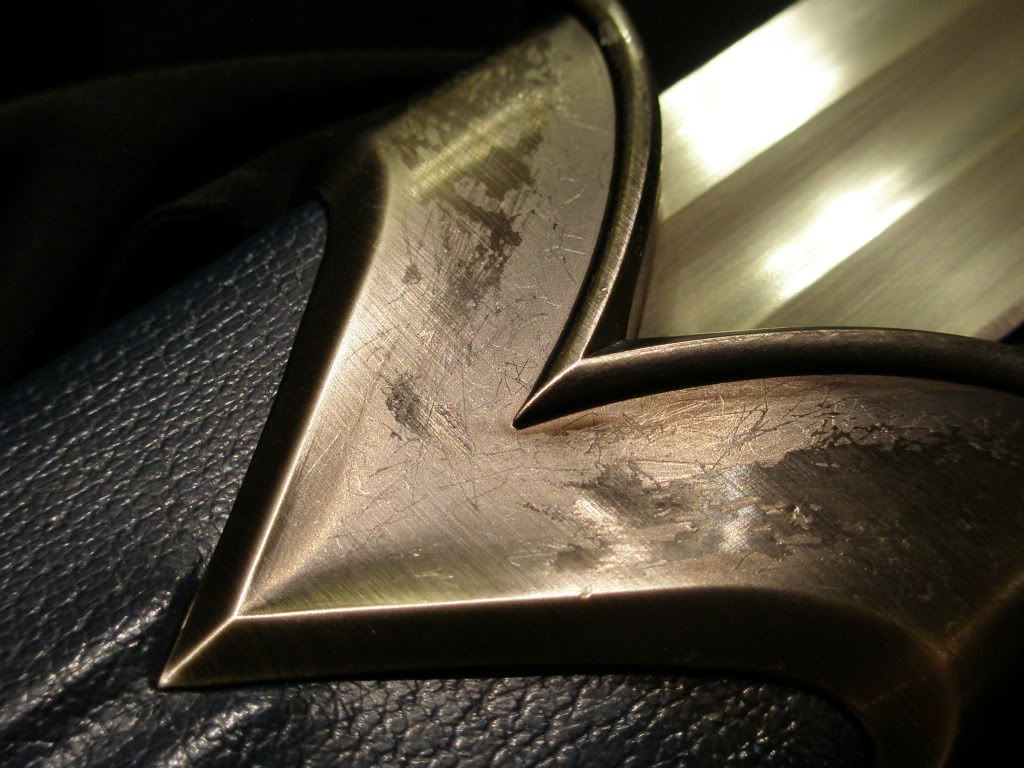


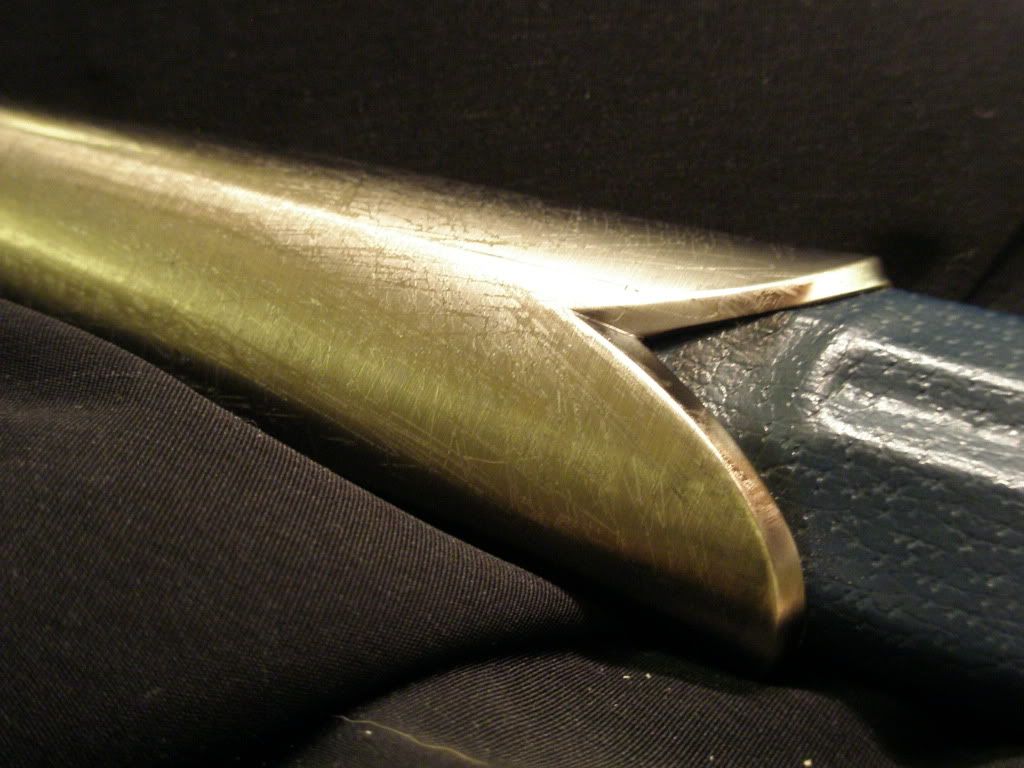

Hope you enjoyed the pics, and feel free to post whatever you want. Criticisms, LotR jokes, advice, praise, stories :lol. I'm hoping to post some pics of my enhancement process of Anduril soon, so stay tuned!
This is my thread of bringing the look of my United Cutlery/ cheap knockoff Lord of the Rings swords from rather dull and 'meh' to ancient and beautiful.
*Anduril pics on post 19*
*Ranger sword pics on post 26*
*Legolas knife comparison on post 32*
As LotR fans know, Glamdring is one of the oldest swords in the entire series, many thousands of years old, made by the Elves.
Well, out of the box, my replica looked like it had just been made around a week ago and someone spray painted some flat clear coat on it :angry.

I vowed then and there that I would distress it, weather it, antique it, whatever it took to make the sword look the way it was supposed to (in my mind, a super-amazing sword that would only have a slight buildup of dirt and a few dings and scratches, despite millennia of hacking things apart).
I started out with the dings- used a nice old horseshoe and lightly tapped the sword's hilt a few times in random places. I say lightly because the handle of the sword is made out of pretty darn soft metal, and I didn't want really deep dents in it.

The scratches were the most time-consuming. I actually took an old calligraphy nib that didn't work anymore and started manually scratching every part of the hilt I wanted to be scratched. This gave me a lot more control over the look of the hilt than the much quicker way of using coarse sandpaper. Drove me a bit crazy at times, but it achieved a nice effect. It was also really handy for removing bits of the dull clear coat in the areas I wanted shinier.

After all this (probably around 20 hours of weathering- remember, I did this over many years :lol), the sword looked quite nice, but it was still missing something: dirt in all the grooves and in the engraved Cirth lettering to make it really look old. This was the biggest deal in my mind, especially since the recently (then) released Museum Collection edition did such a good job with the dirt bit.
I decided soot would be a nice source of dirtiness for the sword's hilt, so I went ahead a held the dings and lettering over a candle and blackened them all up. Then, took a moist paper towel and wiped off the excess soot so the only remaining dirtiness was in the fine grooves and unreachable places in the hilt.



As you can see, this really enhanced the look of the sword, especially with the darker lettering. At this point, I was finally satisfied- sure, the blade would never be as accurate as the film prop, sure the pommel would always be a little bit wider than the film prop, but at least this sword finally had the one thing it lacked when it was new: character.





Hope you enjoyed the pics, and feel free to post whatever you want. Criticisms, LotR jokes, advice, praise, stories :lol. I'm hoping to post some pics of my enhancement process of Anduril soon, so stay tuned!
Last edited:










